《PRINCIPLES OF ECONOMICS》
| 作者 | N.GREGORY MANKIW 编者 |
|---|---|
| 出版 | THE DRYDEN PRESS |
| 参考页数 | 797 |
| 出版时间 | 没有确切时间的资料 目录预览 |
| ISBN号 | 0030982383 — 求助条款 |
| PDF编号 | 811846278(仅供预览,未存储实际文件) |
| 求助格式 | 扫描PDF(若分多册发行,每次仅能受理1册) |

PART ⅠINTRODUCTION1
CHAPTER 1TEN PRINCIPLES OF ECONOMICS3
How People Make Decisions4
Principle #1:People Face Tradeoffs4
Principle #2:The Cost of Something Is What You Give Up to Get It5
Principle #3:Rational People Think at the Margin6
Principle #4:People Respond to Incentives7
How People Interact8
Principle #5:Trade Can Make Everyone Better Off8
Principle #6:Markets Are Usually a Good Way to Organize Economic Activity9
Principle #7:Governments Can Sometimes Improve Market Outcomes10
How the Economy as a Whole Works10
Principle #8:A Country’s Standard of Living Depends on Its Ability to Produce Goods and Services11
Principle #9:Prices Rise When the Government Prints Too Much Money12
Principle #10:Society Faces a Short-Run Tradeoff between Inflation and Unemployment13
Conclusion13
Summary14
Key Concepts14
Questions for Review15
Problems and Applications15
CHAPTER 2THINKING LIKE AN ECONOMIST17
The Economist as Scientist18
The Scientific Method:Observation,Theory,and More Observation19
The Role of Assumptions19
Economic Models20
Our First Model:The Circular-Flow Diagram21
Our Second Model:The Production Possibilities Frontier22
Microeconomics and Macroeconomics25
The Economist as Policymaker26
Positive versus Normative Analysis26
Economists in Washington27
Why Economists Disagree28
Differences in Scientific Judgments28
Differences in Values29
Charlatans and Cranks29
Perception versus Reality30
Let’s Get Going31
Summary32
Key Concepts32
Questions for Review32
Problems and Applications33
Appendix:Graphing——A Brief Review34
Graphs of a Single Variable34
Graphs of Two Variables:The Coordinate System34
Curves in the Coordinate System36
Slope and Elasticity39
Cause and Effect41
Omitted Variables41
Reverse Causality42
CHAPTER 3INTERDEPENDENCE AND THE GAINS FROM TRADE45
A Parable for the Modern Economy46
Production Possibilities46
Specialization and Trade48
The Principle of Comparative Advantage50
Absolute Advantage51
Opportunity Cost and Comparative Advantage51
Comparative Advantage and Trade52
Applications of Comparative Advantage53
Should Michael Jordan Mow His Own Lawn?53
Should the United States Trade with Other Countries?54
FYI:The Legacy of Adam Smith and David Ricardo54
Conclusion55
Summary55
Key Concepts56
Questions for Review56
Problems and Applications56
PART ⅡSUPPLY AND DEMAND Ⅰ:HOW MARKETS WORK59
CHAPTER 4THE MARKET FORCES OF SUPPLY AND DEMAND61
Markets and Competition62
Competitive Markets62
Competition:Perfect and Otherwise62
Demand63
The Determinants of Individual Demand63
Price63
Income64
Prices of Related Goods64
Tastes64
Expectations64
The Demand Schedule and the Demand Curve64
Ceteris Paribus66
Market Demand versus Individual Demand66
Shifts in the Demand Curve68
CASE STUDY:Two Ways to Reduce the Quantity of Smoking Demanded69
Supply70
The Determinants of Individual Supply71
Price71
Input Prices71
Technology71
Expectations71
The Supply Schedule and the Supply Curve71
Market Supply versus Individual Supply72
Shifts in the Supply Curve73
Supply and Demand Together74
Equilibrium76
Three Steps to Analyzing Changes in Equilibrium78
Example:A Change in Demand78
Shifts in Curves versus Movements along Curves80
Example:A Change in Supply80
Example:A Change in Both Supply and Demand81
Conclusion:How Prices Allocate Resources81
IN THE NEWS:Supply,Demand,and the Price of Paper——Pulp Reality83
Summary84
Key Concepts85
Questions for Review85
Problems and Applications85
CHAPTER 5ELASTICITY AND ITS APPLICATION89
The Elasticity of Demand90
The Price Elasticity of Demand and Its Determinants90
Necessities versus Luxuries90
Availability of Close Substitutes90
Definition of the Market90
Time Horizon91
Computing the Price Elasticity of Demand91
FYI:Calculating Elasticities Using the Midpoint Method92
The Variety of Demand Curves92
Total Revenue and the Price Elasticity of Demand94
CASE STUDY:Pricing Admission to a Museum96
The Income Elasticity of Demand96
FYI:Elasticity and Total Revenue along a Linear Demand Curve97
IN THE NEWS:On the Road with Elasticity——For Whom the Booth Tolls,Price Really Does Matter98
The Elasticity of Supply99
The Price Elasticity of Supply and Its Determinants99
Computing the Price Elasticity of Supply99
The Variety of Supply Curves100
Three Applications of Supply,Demand,and Elasticity102
Can Good News for Farming Be Bad News for Farmers?103
Why Did OPEC Fail to Keep the Price of Oil High?105
Does Drug Interdiction Increase or Decrease Drug-Related Crime?106
Conclusion108
Summary108
Key Concepts109
Questions for Review109
Problems and Applications109
CHAPTER 6SUPPLY,DEMAND,AND GOVERNMENT POLICIES111
Controls on Prices112
How Price Ceilings Affect Market Outcomes112
CASE STUDY:Lines at the Gas Pump113
CASE STUDY:Rent Control in the Short Run and Long Run115
IN THE NEWS:Rent Control in New York City——Home Free:Some Rich and Famous of New York City Bask in Shelter of Rent Law116
How Price Floors Affect Market Outcomes117
CASE STUDY:The Minimum Wage118
Evaluating Price Controls120
Taxes121
How Taxes on Buyers Affect Market Outcomes122
How Taxes on Sellers Affect Market Outcomes123
CASE STUDY:Can Congress Distribute the Burden of a Payroll Tax?124
Elasticity and Tax Incidence125
CASE STUDY:Who Pays the Luxury Tax?127
Conclusion128
Summary128
Key Concepts128
Questions for Review128
Problems and Applications129
PART ⅢSUPPLY AND DEMAND Ⅱ:MARKETS AND WELFARE131
CHAPTER 7CONSUMERS,PRODUCERS,AND THE EFFICIENCY OF MARKETS133
Consumer Surplus134
Willingness to Pay134
Using the Demand Curve to Measure Consumer Surplus135
How a Lower Price Raises Consumer Surplus138
What Does Consumer Surplus Measure?138
Producer Surplus140
Cost and the Willingness to Sell140
Using the Supply Curve to Measure Producer Surplus141
How a Higher Price Raises Producer Surplus143
Market Efficiency144
The Benevolent Social Planner144
FYI:The Invisible Hand of the Marketplace145
Evaluating the Market Equilibrium146
IN THE NEWS:Ticket Scalping——Tickets?Supply Meets Demand on Sidewalk148
Conclusion:Market Efficiency and Market Failure150
Summary151
Key Concepts151
Questions for Review151
Problems and Applications151
CHAPTER 8APPLICATION:THE COSTS OF TAXATION155
The Deadweight Loss of Taxation156
How a Tax Affects Market Participants156
Welfare without a Tax157
Welfare with a Tax158
Changes in Welfare158
Deadweight Losses and the Gains from Trade159
The Determinants of the Deadweight Loss160
CASE STUDY:The Deadweight Loss of Taxes on Labor162
CASE STUDY:Henry George and the Tax on Land163
Deadweight Loss and Tax Revenue as Taxes Vary164
CASE STUDY:The Laffer Curve and Supply-Side Economics166
Conclusion168
IN THE NEWS:Should Ukraine Cut Tax Rates to Raise Tax Revenue?——A Big Tax Cut to Lift the Economy——Not Here,in Ukraine169
Summary170
Key Concepts170
Questions for Review170
Problems and Applications170
CHAPTER 9APPLICATION:INTERNATIONAL TRADE173
The Determinants of Trade174
The Equilibrium without Trade174
The World Price and Comparative Advantage175
FYI:Comparing Prices and Comparative Advantage175
The Winners and Losers from Trade176
The Gains and Losses of an Exporting Country176
The Gains and Losses of an Importing Country179
The Effects of a Tariff181
The Effects of an Import Quota182
The Lessons for Trade Policy185
The Arguments for Restricting Trade186
The Jobs Argument186
The National-Security Argument187
The Infant-Industry Argument187
IN THE NEWS:NAFTA and Mexican Tomatoes——President Wins Tomato Accord for Floridians:Mexico Agrees to End Low-Price Shipments188
The Unfair-Competition Argument189
The Protection-as-a-Bargaining-Chip Argument189
CASE STUDY:GATT and the Multilateral Approach to Free Trade189
IN THE NEWS:A Chicken Invasion——U.S.Chicken in Every Pot?Nyet! Russians Cry Foul190
Conclusion191
Summary192
Key Concepts192
Questions for Review193
Problems and Applications193
PART ⅣTHE ECONOMICS OF THE PUBLIC SECTOR197
CHAPTER 10EXTERNALITIES199
Externalities and Market Inefficiency201
Welfare Economics:A Recap201
Negative Externalities in Production202
Positive Externalities in Production203
CASE STUDY:The Debate over Technology Policy204
Externalities in Consumption205
Private Solutions to Externalities207
The Types of Private Solutions207
IN THE NEWS:An Outraged Citizen Speaks Out——Smnokers,Pick Up Your Butts208
The Coase Theorem208
Why Private Solutions Do Not Always Work209
Public Policies toward Externalities210
Regulation210
Pigovian Taxes and Subsidies211
Tradable Pollution Permits212
IN THE NEWS:Pollution Permits in Action——Smog Swapping:New Rules Harness Power of Free Markets to Curb Air Pollution214
Objections to the Economic Analysis of Pollution214
Conclusion216
Summary216
Key Concepts216
Questions for Review217
Problems and Applications217
CHAPTER 11PUBLIC GOODS AND COMMON RESOURCES219
The Different Kinds of Goods220
Public Goods221
The Free-Rider Problem222
Some Important Public Goods222
National Defense222
Basic Research223
Programs to Fight Poverty223
CASE STUDY:Are Lighthouses Public Goods?224
The Difficult Job of Cost-Benefit Analysis225
CASE STUDY:How Much Is a Life Worth?225
Common Resources227
The Tragedy of the Commons227
CASE STUDY:Capitalism,Communism,and Collective Resources228
Some Important Common Resources229
Clean Air and Water229
Oil Pools229
Congested Roads229
IN THE NEWS:The Singapore Solution——Economics of Road Pricing230
Fish,Whales,and Other Wildlife231
CASE STUDY:Why the Cow Is Not Extinct232
IN THE NEWS:Should Yellowstone Charge as Much as Disney World?——Save the Parks,and Make a Profit232
Conclusion:The Importance of Property Rights233
Summary234
Key Concepts234
Questions for Review234
Problems and Applications234
CHAPTER 12THE DESIGN OF THE TAX SYSTEM237
A Financial Overview of the U.S.Government238
The Federal Government238
Receipts238
Spending240
State and Local Government242
Receipts242
Spending243
Taxes and Efficiency243
Deadweight Losses244
CASE STUDY:Should Income or Consumption Be Taxed?245
Administrative Burden246
IN THE NEWS:Small Business and the Tax Laws——Obeying the Tax Laws:Small Business’s Burden247
Marginal Tax Rates versus Average Tax Rates248
Lump-Sum Taxes248
Taxes and Equity249
The Benefits Principle249
The Ability-to-Pay Principle250
Vertical Equity250
CASE STUDY:How the Burden of Taxes Is Distributed250
Horizontal Equity251
CASE STUDY:Horizontal Equity and the Marriage Tax252
Tax Incidence and Tax Equity253
CASE STUDY:Who Pays the Corporate Income Tax?254
CASE STUDY:The Flat Tax255
Conclusion:The Tradeoff between Equity and Efficiency257
Summary257
Key Concepts258
Questions for Review258
Problems and Applications258
PART ⅤFIRM BEHAVIOR AND THE ORGANIZATION OF INDUSTRY261
CHAPTER 13THE COSTS OF PRODUCTION263
What Are Costs?264
Total Revenue,Total Cost,and Profit264
Costs as Opportunity Costs265
The Cost of Capital as an Opportunity Cost265
Economic Profit versus Accounting Profit266
Production and Costs267
The Production Function267
From the Production Function to the Total-Cost Curve269
The Various Measures of Cost270
Fixed and Variable Costs271
Average and Marginal Cost272
Cost Curves and Their Shapes273
Rising Marginal Cost273
U-Shaped Average Total Cost274
The Relationship between Marginal Cost and Average Total Cost274
Typical Cost Curves275
Costs in the Short Run and in the Long Run277
Conclusion278
Summary278
Key Concepts279
Questions for Review279
Problems and Applications279
CHAPTER 14FIRMS IN COMPETITIVE MARKETS283
What Is a Competitive Market?284
The Meaning of Competition284
The Revenue of a Competitive Firm284
Profit Maximization and the Competitive Firm’s Supply Curve286
A Simple Example of Profit Maximization286
The Marginal-Cost Curve and the Firm’s Supply Decision287
The Firm’s Short-Run Decision to Shut Down288
CASE STUDY:Near-Empty Restaurants and Off-Season Miniature Golf290
FYI:Spilt Milk and Sunk Costs291
The Firm’s Long-Run Decision to Exit or Enter an Industry292
Measuring Profit in Our Graph for the Competitive Firm292
The Supply Curve in a Competitive Market294
Market Supply with a Fixed Number of Firms294
Market Supply with Entry and Exit295
FYI:Why Do Competitive Firms Stay in Business If They Make Zero Profit?296
A Shift in Demand in the Short Run and Long Run297
Why the Long-Run Supply Curve Might Slope Upward298
Conclusion:Behind the Supply Curve300
Summary300
Key Concepts301
Questions for Review301
Problems and Applications301
CHAPTER 15MONOPOLY303
Why Monopolies Arise304
Monopoly Resources305
CASE STUDY:The DeBeers Diamond Monopoly305
Government-Created Monopolies306
Natural Monopolies306
How Monopolies Make Production and Pricing Decisions308
Monopoly versus Competition308
A Monopoly’s Revenue308
Profit Maximization311
FYI:Why a Monopoly Does Not Have a Supply Curve313
A Monopoly’s Profit313
CASE STUDY:Monopoly Drugs versus Generic Drugs314
The Welfare Cost of Monopoly315
The Deadweight Loss316
The Monopoly’s Profit:A Social Cost?318
Public Policy toward Monopolies319
Increasing Competition with Antitrust Laws319
Regulation320
IN THE NEWS:Boeing’s Market Power——Many Airlines Not Worried by Boeing-McDonnell Deal321
Public Ownership322
Doing Nothing323
Price Discrimination323
A Parable about Pricing323
IN THE NEWS:The Future of Electricity——The End of the Last Great Monopoly324
The Moral of the Story326
The Analytics of Price Discrimination327
Examples of Price Discrimination328
Movie Tickets328
Airline Prices329
Discount Coupons329
Financial Aid329
Quantity Discounts329
IN THE NEWS:Competing to Be the Best Monopolist——Let’s Play Monopoly330
Conclusion:The Prevalence of Monopoly332
Summary332
Key Concepts333
Questions for Review333
Problems and Applications333
CHAPTER 16OLIGOPOLY337
Between Monopoly and Perfect Competition338
Markets with Only a Few Sellers339
A Duopoly Example340
Competition,Monopolies,and Cartels340
The Equilibrium for an Oligopoly341
How the Size of an Oligopoly Affects the Market Outcome342
CASE STUDY:OPEC and the World Oil Market344
IN THE NEWS:Squabbling in OPEC——OPEC Is Expected to Delay Action on New Oil Output by Iraq345
Game Theory and the Economies of Cooperation345
The Prisoners’ Dilemma346
Oligopolies as a Prisoners’ Dilemma347
Other Examples of the Prisoners’ Dilemma348
Arms Races348
IN THE NEWS:Modern Pirates——Ocean Shippers Break Ranks on Pricing349
Advertising350
Common Resources351
The Prisoners’ Dilemma and the Welfare of Society351
Why People Sometimes Cooperate352
CASE STUDY:The Prisoners’ Dilemma Tournament353
Public Policy toward Oligopolies354
Restraint of Trade and the Antitrust Laws354
CASE STUDY:An Illegal Phone Call355
Controversies over Antitrust Policy356
Resale Price Maintenance356
IN THE NEWS:Anticompetitive “R” Us?——Toys “R” Us Is Expecting U.S.Charges of Antitrust357
Tying358
Conclusion359
Summary359
Key Concepts359
Questions for Review359
Problems and Applications360
CHAPTER 17MONOPOLISTIC COMPETITION363
Competition with Differentiated Products364
The Monopolistically Competitive Firm in the Short Run364
The Long-Run Equilibrium365
Monopolistic versus Perfect Competition367
Excess Capacity368
Markup over Marginal Cost368
Monopolistic Competition and the Welfare of Society369
FYI:Is Excess Capacity a Social Problem?370
Advertising371
The Debate over Advertising371
The Critique of Advertising371
The Defense of Advertising371
CASE STUDY:Advertising and the Price of Eyeglasses372
Advertising as a Signal of Quality373
Brand Names374
CASE STUDY:Brand Names under Communism375
IN THE NEWS:TV Networks as Brand Names——A TV Season When Image Is Everything376
Conclusion377
Summary377
Key Concepts377
Questions for Review378
Problems and Applications378
PART ⅥTHE ECONOMICS OF LABOR MARKETS381
CHAPTER 18THE MARKETS FOR THE FACTORS OF PRODUCTION383
A Firm’s Demand for Labor384
The Competitive Profit-Maximizing Firm385
The Production Function and the Marginal Product of Labor385
The Value of the Marginal Product and the Demand for Labor387
FYI:Input Demand and Output Supply:Two Sides of the Same Coin388
Labor-Market Equilibrium389
Marginal Productivity in Equilibrium389
Shifts in Labor Supply390
Shifts in Labor Demand391
CASE STUDY:Productivity and Wages392
The Other Factors of Production:Land and Capital394
Equilibrium in the Markets for Land and Capital394
FYI:The Various Forms of Capital Income396
Linkages among the Factors of Production396
CASE STUDY:The Economics of the Black Death397
Conclusion398
Summary398
Key Concepts399
Questions for Review399
Problems and Applications399
CHAPTER 19EARNINGS AND DISCRIMINATION401
Some Determinants of Equilibrium Wages402
Compensating Differentials402
Human Capital403
CASE STUDY:The Increasing Value of Skills404
Ability,Effort,and Chance405
CASE STUDY:The Benefits of Beauty406
An Alternative View of Education:Signaling406
CASE STUDY:Human Capital,Natural Ability,andCompulsory School Attendance407
The Superstar Phenomenon408
The Economics of Discrimination409
Measuring Labor-Market Discrimination410
Discrimination by Employers411
CASE STUDY:Segregated Streetcars and the Profit Motive412
Discrimination by Customers and Governments412
CASE STUDY:Discrimination in Sports413
IN THE NEWS:Men,Women,and Wages——The Shrinking Pay Gap414
The Debate over Comparable Worth415
Conclusion416
Summary417
Key Concepts417
Questions for Review417
Problems and Applications418
CHAPTER 20THE DISTRIBUTION OF INCOME421
The Measurement of Inequality422
U.S.Income Inequality422
CASE STUDY:The Women’s Movement and the Income Distribution424
CASE STUDY:Income Inequality around the World425
The Poverty Rate426
Problems in Measuring Inequality427
In-Kind Transfers428
The Economic Life Cycle428
Transitory versus Permanent Income428
IN THE NEWS:Is the Poverty Rate Correctly Measured?——Old Flaws Undermine New Poverty-Level Data429
Economic Mobility430
The Political Philosophy of Redistributing Income431
Utilitarianism431
Liberalism432
Libertarianism433
Policies to Reduce Poverty434
Minimum-Wage Laws435
Welfare435
IN THE NEWS:The 1996 Welfare Reform——What Makes the Welfare Bill a Winner436
Negative Income Tax436
In-Kind Transfers438
Antipoverty Programs and Work Incentives438
IN THE NEWS:Saving and Welfare——For Welfare Parents,Scrimping Is Legal,but Saving Is Out439
Conclusion440
Summary441
Key Concepts441
Questions for Review441
Problems and Applications442
PART ⅦADVANCED TOPIC445
CHAPTER 21THE THEORY OF CONSUMER CHOICE447
The Budget Constraint:What the Consumer Can Afford448
Preferences:What the Consumer Wants450
Representing Preferences with Indifference Curves450
Four Properties of Indifference Curves451
Two Extreme Examples of Indifference Curves453
Perfect Substitutes453
Perfect Complements454
FYI:Utility:An Alternative Way to Represent a Consumer’s Preferences455
Optimization:What the Consumer Chooses455
The Consumer’s Optimal Choices455
How Changes in Income Affect the Consumer’s Choices456
How Changes in Prices Affect the Consumer’s Choices457
Income and Substitution Effects458
Deriving the Demand Curve461
Four Applications462
Do All Demand Curves Slope Downward?462
How Do Wages Affect Labor Supply?463
CASE STUDY:Income Effects on Labor Supply:Historical Trends,Lottery Winners,and the Carnegie Conjecture466
How Do Interest Rates Affect Household Saving?467
Do the Poor Prefer to Receive Cash or In-Kind Transfers?469
Conclusion:Do People Really Think This Way?471
Summary471
Key Concepts472
Questions for Review472
Problems and Applications472
PART ⅧTHE DATA OF MACROECONOMICS475
CHAPTER 22MEASURING A NATION’S INCOME477
The Economy’s Income and Expenditure478
The Measurement of Gross Domestic Product480
“GDP Is the Market Value…”480
“…Of All…”480
“…Final…”481
“…Goods and Services…”481
“…Produced…”481
“…Within a Country…”481
“…In a Given Period of Time.”482
FYI:Three Other Measures of Income483
The Components of GDP483
Real versus Nominal GDP485
A Numerical Example485
The GDP Deflator487
CASE STUDY:Real GDP over Recent History487
GDP and Economic Well-Being488
CASE STUDY:International Differences in GDP and the Quality of Life490
Conclusion491
Summary491
Key Concepts492
Questions for Review492
Problems and Applications492
CHAPTER 23MEASURING THE COST OF LIVING495
The Consumer Price Index496
How the Consumer Price Index Is Calculated496
FYI:What Is in the CPI’s Basket?498
Problems in Measuring the Cost of Living499
IN THE NEWS:Shopping for the CPI——Is the CPI Accurate?Ask the Federal Sleuths Who Get the Numbers500
IN THE NEWS:The CPI Commission——Prisoners of Faulty Statistics502
The GDP Deflator versus the Consumer Price Index502
Correcting Economic Variables for the Effects of Inflation505
Dollar Figures from Different Times505
IN THE NEWS:Mr.Index Goes to Hollywood——Winner and Still Champ506
Indexation506
Real and Nominal Interest Rates507
Conclusion508
Summary509
Key Concepts509
Questions for Review509
Problems and Applications510
PART ⅨTHE REAL ECONOMY IN THE LONG RUN513
CHAPTER 24PRODUCTION AND GROWTH515
Economic Growth around the World516
FYI:The Magic of Compounding and the Rule of 70518
Productivity:Its Role and Determinants518
Why Productivity Is So Important519
How Productivity Is Determined519
Physical Capital520
Human Capital520
Natural Resources520
CASE STUDY:Are Natural Resources a Limit to Growth?521
IN THE NEWS:Computers and Productivity——What Has the Computer Done for Us Lately?522
Technological Knowledge523
The Production Function524
Economic Growth and Public Policy525
The Importance of Saving and Investment525
Diminishing Returns and the Catch-Up Effect526
Investment from Abroad527
Education528
IN THE NEWS:The World Bank——World Bank Focusing on Areas Shunned by Western Business529
Property Rights and Political Stability530
CASE STUDY:What Causes Famine?531
Free Trade531
IN THE NEWS:The Sachs Solution to the African Problem——Growth in Africa:It Can Be Done532
The Control of Population Growth534
Research and Development535
CASE STUDY:The Productivity Slowdown535
Conclusion:The Importance of Long-Run Growth537
Summary538
Key Concepts538
Questions for Review538
Problems and Applications538
CHAPTER 25SAVING,INVESTMENT,AND THE FINANCIAL SYSTEM541
Financial Institutions in the U.S.Economy542
Financial Markets542
The Bond Market542
The Stock Market543
Financial Intermediaries544
Banks544
FYI:How to Read the Newspaper’s Stock Tables545
Mutual Funds546
Summing Up547
Saving and Investment in the National Income Accounts547
Some Important Identities548
The Meaning of Saving and Investment549
The Market for Loanable Funds550
Supply and Demand for Loanable Funds550
Policy 1:Taxes and Saving552
Policy 2:Taxes and Investment554
Policy 3:Government Budget Deficits555
FYI:Ricardian Equivalence:An Alternative View of Government Budget Deficits556
CASE STUDY:Government Debt and Deficits in the United States557
Conclusion559
IN THE NEWS:The Balanced Budget Amendment—Balanced Budget:Bad Economics560
Summary561
Key Concepts562
Questions for Review562
Problems and Applications562
CHAPTER 26THE NATURAL RATE OF UNEMPLOYMENT565
Identifying Unemployment566
How Is Unemployment Measured?566
CASE STUDY:Labor-Force Participation of Men and Women in the U.S.Economy570
Is Unemployment Measured Correctly?571
How Long Are the Unemployed without Work?572
Why Is There Unemployment?572
Minimum-Wage Laws573
IN THE NEWS:The Minimum-Wage Debate——Thesis:Rise in Wages Will Hurt Teenage Group574
Unions and Collective Bargaining575
The Economics of Unions576
Are Unions Good or Bad for the Economy?577
IN THE NEWS:The UAW’s Tradeoff——New Approach for Auto Union in Ford Accord——The Deal:No Job Cuts but Less Pay for Some578
The Theory of Efficiency Wages578
Worker Health579
Worker Turnover579
Worker Effort580
Worker Quality580
FYI:The Economics of Asymmetric Information581
CASE STUDY:Henry Ford and the Very Generous $5-a-Day Wage582
Job Search583
The Inevitability of Search Unemployment584
Public Policy and Job Search584
Unemployment Insurance585
Conclusion586
Summary586
Key Concepts586
Questions for Review587
Problems and Applications587
PART ⅩMONEY AND PRICES IN THE LONG RUN589
CHAPTER 27THE MONETARY SYSTEM591
The Meaning of Money592
The Functions of Money592
The Kinds of Money593
IN THE NEWS:Money on the Island of Yap——Fixed Assets,or Why a Loan in Yap Is Hard to Roll Over594
Money in the U.S.Economy595
CASE STUDY:Where Is All the Currency?596
FYI:Credit Cards,Debit Cards,and Money597
The Federal Reserve597
The Fed’s Organization598
The Federal Open Market Committee598
Banks and the Money Supply599
The Simple Case of 100-Percent-Reserve Banking600
Money Creation with Fractional-Reserve Banking600
The Money Multiplier602
The Fed’s Tools of Monetary Control603
Open-Market Operations603
Reserve Requirements604
The Discount Rate604
Problems in Controlling the Money Supply604
CASE STUDY:Bank Runs and the Money Supply605
Conclusion606
Summary606
Key Concepts607
Questions for Review607
Problems and Applications607
CHAPTER 28INFLATION:ITS CAUSES AND COSTS609
The Causes of Inflation610
The Level of Prices and the Value of Money611
Money Supply,Money Demand,and Monetary Equilibrium612
The Effects of a Monetary Injection613
A Brief Look at the Adjustment Process614
The Classical Dichotomy and Monetary Neutrality615
Velocity and the Quantity Equation616
CASE STUDY:Money and Prices during Four Hyperinflations618
The Inflation Tax619
IN THE NEWS:The Hyperinflation in Serbia——Special,Today Only:6 Million Dinars for a Snickers Bar620
The Fisher Effect621
The Costs of Inflation623
A Fall in Purchasing Power?The Inflation Fallacy623
Shoeleather Costs623
Menu Costs625
Relative-Price Variability and the Misallocation of Resources625
Inflation-Induced Tax Distortions625
Confusion and Inconvenience627
A Special Cost of Unexpected Inflation:Arbitrary Redistributions of Wealth628
IN THE NEWS:How to Protect Your Savings from Inflation——Inflation Fighters for the Long Term628
CASE STUDY:The Wizard of Oz and the Free-Silver Debate630
Conclusion631
Summary632
Key Concepts632
Questions for Review633
Problems and Applications633
PART ⅪTHE MACROECONOMICS OF OPEN ECONOMIES635
CHAPTER 29OPEN-ECONOMY MACROECONOMICS:BASIC CONCEPTS637
The International Flows of Goods and Capital638
The Flow of Goods:Exports,Imports,and Net Exports638
CASE STUDY:The Increasing Openness of the U.S.Economy639
The Flow of Capital:Net Foreign Investment641
IN THE NEWS:Capital Flows to Russia——Foreign Buyers Look to Russia:Despite Risks,Investors Coming Up with the Cash642
The Equality of Net Exports and Net Foreign Investment642
Saving,Investment,and Their Relationship to the International Flows643
IN THE NEWS:Flows between the Developing South and the Industrial North——Fantasy Economics644
CASE STUDY:Saving,Investment,and Net Foreign Investment of the United States646
The Prices for International Transactions:Real and Nominal Exchange Rates647
Nominal Exchange Rates648
Real Exchange Rates648
IN THE NEWS:A Dollar Depreciation and an Export Boom——Weak Dollar Makes U.S.World’s Bargain Bazaar650
A First Theory of Exchange-Rate Determination:Purchasing-Power Parity651
The Basic Logic of Purchasing-Power Parity652
Implications of Purchasing-Power Parity652
CASE STUDY:The Nominal Exchange Rate during a Hyperinflation654
Limitations of Purchasing-Power Parity655
Conclusion656
Summary656
Key Concepts656
Questions for Review656
Problems and Applications657
CHAPTER 30A MACROECONOMIC THEORY OF THE OPEN ECONOMY659
Supply and Demand for Loanable Funds and for Foreign-Currency Exchange660
The Market for Loanable Funds660
The Market for Foreign-Currency Exchange662
FYI:Purchasing-Power Parity as a Special Case664
Equilibrium in the Open Economy664
Net Foreign Investment:The Link between the Two Markets664
Simultaneous Equilibrium in Two Markets665
FYI:The Classical Dichotomy Once Again667
How Policies and Events Affect an Open Economy668
Government Budget Deficits668
CASE STUDY:The Twin Deficits in the United States670
Trade Policy671
Political Instability and Capital Flight673
Conclusion676
Summary676
Key Concepts677
Questions for Review677
Problems and Applications677
PART ⅫSHORT-RUN ECONOMIC FLUCTUATIONS679
CHAPTER 31AGGREGATE DEMAND AND AGGREGATE SUPPLY681
Three Key Facts about Economic Fluctuations682
Fact 1:Economic Fluctuations Are Irregular and Unpredictable682
Fact 2:Most Macroeconomic Quantities Fluctuate Together684
Fact 3:As Output Falls,Unemployment Rises684
FYI:Okun’s Law685
Explaining Short-Run Economic Fluctuations685
How the Short Run Differs from the Long Run686
The Basic Model of Economic Fluctuations686
The Aggregate-Demand Curve688
Why the Aggregate-Demand Curve Is Downward Sloping688
Pigou’s Wealth Effect689
Keynes’s Interest-Rate Effect689
Mundell-Fleming’s Exchange-Rate Effect689
Summary689
Why the Aggregate-Demand Curve Might Shift690
The Aggregate-Supply Curve691
Why the Aggregate-Supply Curve Is Vertical in the Long Run691
Why the Long-Run Aggregate-Supply Curve Might Shift692
Why the Aggregate-Supply Curve Is Upward Sloping in the Short Run693
The New Classical Misperceptions Theory694
The Keynesian Sticky-Wage Theory694
The New Keynesian Sticky-Price Theory694
Summary695
Why the Short-Run Aggregate-Supply Curve Might Shift695
Two Causes of Recession696
The Effects of a Shift in Aggregate Demand696
IN THE NEWS:How Consumers Shift Aggregate Demand——Consumers Get the Credit for Expanding Economy698
The Effects of a Shift in Aggregate Supply699
CASE STUDY:Oil and the Economy701
Conclusion:The Origins of Aggregate Demand and Aggregate Supply702
Summary703
Key Concepts703
Questions for Review704
Problems and Applications704
CHAPTER 32THE INFLUENCE OF MONETARY AND FISCAL POLICY ON AGGREGATE DEMAND707
How Monetary Policy Influences Aggregate Demand708
The Theory of Liquidity Preference709
Money Supply709
Money Demand709
Equilibrium in the Money Market710
The Downward Slope of the Aggregate-Demand Curve712
Changes in the Money Supply712
Interest-Rate Targets and Fed Policy715
How Fiscal Policy Influences Aggregate Demand716
Changes in Government Purchases716
The Multiplier Effect717
FYI:A Formula for the Government-Purchases Multiplier718
The Crowding-Out Effect718
Changes in Taxes720
FYI:How Fiscal Policy Might Affect Aggregate Supply720
Using Policy to Stabilize the Economy721
The Case for Active Stabilization Policy721
CASE STUDY:Keynesians in the White House723
The Case against Active Stabilization Policy724
IN THE NEWS:The Independence of the Federal Reserve——Don’t Tread on the Fed724
Automatic Stabilizers726
The Economy in the Long Run and the Short Run727
FYI:The Long Run and the Short Run:An Algebraic Explanation728
Conclusion729
Summary729
Key Concepts730
Questions for Review730
Problems and Applications730
CHAPTER 33THE SHORT-RUN TRADEOFF BETWEEN INFLATION AND UNEMPLOYMENT733
The Phillips Curve734
Origins of the Phillips Curve734
Aggregate Demand,Aggregate Supply,and the Phillips Curve735
IN THE NEWS:The Effects of Low Unemployment——Tighter Labor Market Widens Inflation Fears737
Shifts in the Phillips Curve:The Role of Expectations738
The Long-Run Phillips Curve738
Expectations and the Short-Run Phillips Curve741
The Natural Experiment for the Natural-Rate Hypothesis743
Shifts in the Phillips Curve:The Role of Supply Shocks745
The Cost of Reducing Inflation748
The Sacrifice Ratio748
Rational Expectations and the Possibility of Costless Disinflation749
The Volcker Disinflation750
The Greenspan Era752
IN THE NEWS:Unemployment and Its Natural Rate——Trying to Figure Out How Low Unemployment Can Go753
Conclusion754
Summary754
Key Concepts755
Questions for Review755
Problems and Applications755
PART ⅩⅢFINAL THOUGHTS757
CHAPTER 34FIVE DEBATES OVER MACROECONOMIC POLICY759
Resolved:Monetary and Fiscal Policymakers Should Try to Stabilize the Economy760
Pro:Policymakers Should Try to Stabilize the Economy760
Con:Policymakers Should Not Try to Stabilize the Economy760
Resolved:Monetary Policy Should Be Made by Rule Rather Than by Discretion762
Pro:Monetary Policy Should Be Made by Rule762
Con:Monetary Policy Should Not Be Made by Rule763
Resolved:The Central Bank Should Aim for Zero Inflation764
Pro:The Central Bank Should Aim for Zero Inflation764
Con:The Central Bank Should Not Aim for Zero Inflation765
Resolved:The Government Should Balance Its Budget767
Pro:The Government Should Balance Its Budget767
Con:The Government Should Not Balance Its Budget768
Resolved:The Tax Laws Should Be Reformed to Encourage Saving770
Pro:The Tax Laws Should Be Reformed to Encourage Saving770
Con:The Tax Laws Should Not Be Reformed to Encourage Saving771
Conclusion772
Summary773
Questions for Review773
Problems and Applications774
Glossary777
Credits783
Index785
《PRINCIPLES OF ECONOMICS》由于是年代较久的资料都绝版了,几乎不可能购买到实物。如果大家为了学习确实需要,可向博主求助其电子版PDF文件(由N.GREGORY MANKIW THE DRYDEN PRESS 出版的版本) 。对合法合规的求助,我会当即受理并将下载地址发送给你。
高度相关资料
-
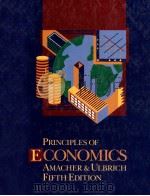
- Principles of economics
- 1992 South-Western Pub. Co.
-

- Principles of Transportation Economics
- 1998 Addison-Wesley
-

- Principles of economics macroeconomics
- 1986 Hatcourt Brace college publishers
-
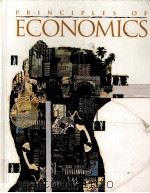
- Principles of economics
- 1996 South-Western College Pub.
-

- PRINCIPLES OF ECONOMICS
- 1991 D.C.HEATH AND COMPANY
-
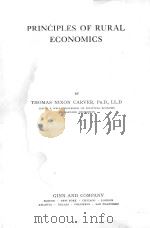
- PRINCIPLES OF RURAL ECONOMICS
- 1911 GINN AND COMPANY
-
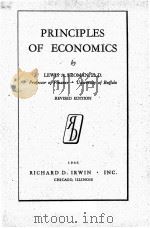
- PRINCIPLES OF ECONOMICS REVISED EDITION
- 1946 RICHARD D. IRWIN INC.
-
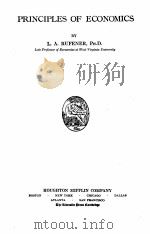
- PRINCIPLES OF ECONOMICS
- 1930 HOUGHTON MIFFLIN CONPANY
-

- ELEMENTARY PRINCIPLES OF ECONOMICS
- 1920 THE MACMILLAN COMPANY
-
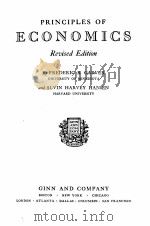
- PRINCIPLES OF ECONOMICS FEVISED EDITION
- 1937 GINN AND COMPANY
-

- PRINCIPLES OF ECONOMICS
- 1989 MACMILLAN PUBLISHING COMPANY
-

- PRINCIPLES OF ECONOMICS
- 1991 D.C.HEATH AND COMPANY
-
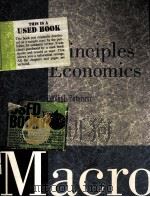
- Principles of economics macro
- 1991 Irwin
提示:百度云已更名为百度网盘(百度盘),天翼云盘、微盘下载地址……暂未提供。➥ PDF文字可复制化或转WORD

